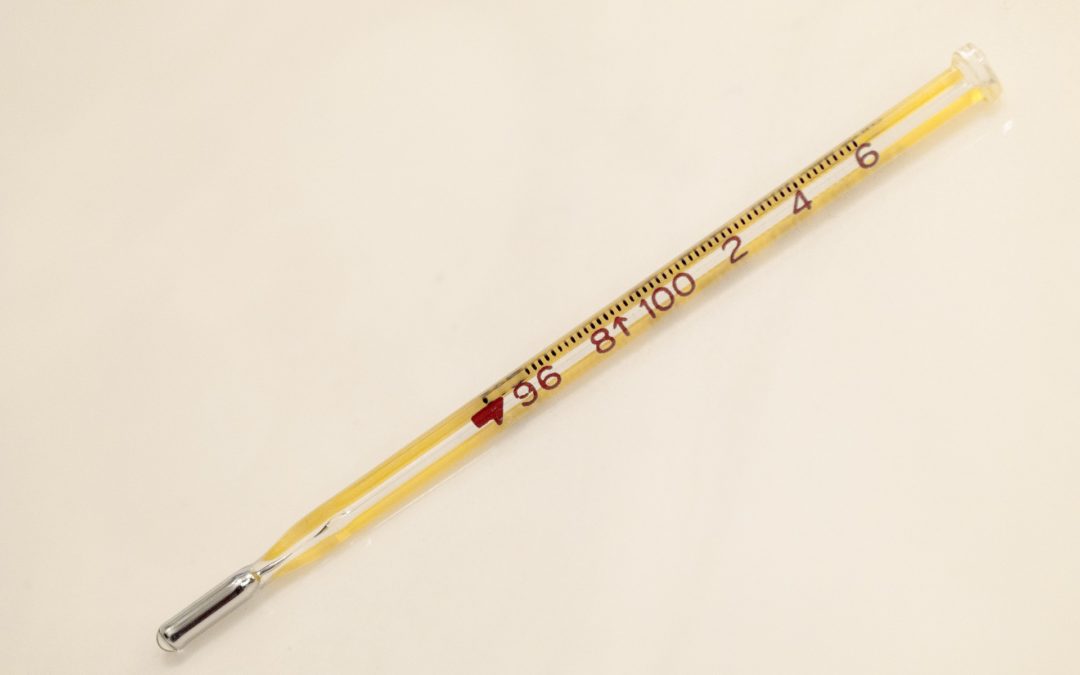Moms, Let’s Talk About Holistic Treatment For Fevers. As a mom of two young boys, I can attest to the unease that can come with having little ones run warm, their heart looking like it will beat out of their chest, checking on them a dozen or so times during the night, and trying every trick up our sleeve to make them more comfortable. As a pretty “crunchy mom” or “green mom”, I was never an advocate of Tylenol at all, and would only use Motrin as a last resort if someone was so completely miserable despite my best efforts to make them more comfortable. This was usually due to accompanying pain.
Drawing down a fever is not something that is recommended, as a fever is a sign that our immune system is working as it should be to help us get well. Rather than make my case for why you would or would not want to lower a fever, I want to cover the various ways in which we can work to make our kids a bit more comfortable while supporting their immune system to fight whatever germs are trying to take hold.
*It is important to note that if your child becomes extremely lethargic or they are having respiratory difficulty, you need to seek medical attention. Speak to your doctor about a safe upper limit for a fever.
There are various things that we can do, holistically speaking to “cool” and “comfort” a child who presents with a fever.
*I am very educated in many areas including aromatic medicine, and pretty open-minded, but one recommendation you will never get from me is to use essential oils internally on a child. So oregano essential oil internally for example? NOT happening.
The first thing I want to bring to your attention is the use of herbs. They are by far more gentle and much more efficient at managing fevers. Surprised? Let’s look at some of the ways they can be used.
Diaphoretic Herbs
Diaphoretic herbs actually induce perspiration, helping the body to sweat. Why is this helpful? Think of your body like the thermostat in your home. They have very similar mechanism’s. Inducing perspiration helps to cool down the bodies core temperature. And shivering when cold is the bodies way of getting warm. Diaphoretic herbs work like this: they enter the circulation and are then thrown off by the sweat glands.
“Diaphoretic herbs stimulate the local nerve-fibers to increase glandular action. These herbs influence the peripheral sensory nerves, whose main job is to relax and dilate the superficial capillaries and vessels. They primarily influence surface circulation, and perspiration is the result of this increased blood flow” [1].
So what does all of this mean? Diaphoretic herbs can be used safely to sweat it out, help lower the fever while not interrupting the immune process like acetaminophen or NSAIDS will. Let’s explore this a little but further.
Diaphoretic Herbs-Relaxing and Stimulating
Relaxing Diaphoretics
Relaxing diaphoretics are used when a fever is present with no actual visible sweating. Relaxing diaphoretic herbs may increase peripheral circulation and help to open the pores (inducing/enabling sweating) [2]. Some relaxing diaphoretic herbs also help relieve the aches and pains associated with fevers. Here are a few relaxing diaphoretics that are safe for kids:
- Catnip (Nepeta cataria)
- Chamomile (Matricaria recutita)
- Lemon Balm (Melissa officinalis)
- Yarrow (Achillea millefolium)
At home, I blend equal parts of Catnip (Nepeta cataria), Chamomile (Matricaria recutita), and Lemon Balm (Melissa officinalis) and store tightly in a mason jar. When my boys (or I) come down with a fever, I begin making a tea (a weak tea for the boys) of 1tsp of these herbs and have them sip throughout the day.
When these herbs are sipped hot, they will help to raise the body’s temperature and produce perspiration by opening the pores of the skin. Add honey to taste (Honey is not for a child under the age of one).
Stimulating Diaphoretics
Stimulating diaphoretics enter the blood and as they are eliminated through the sudoriferous glands; any of the glands in the skin that secrete perspiration [3]. Stimulating diaphoretics are used when a person has a fever but are likely having “chills”. I think we have all been there at one point. Hot but cold. These warming herbs support the increase in our internal temperature. This may sound backwards, but remember when I spoke to the thermostat of our body. These herbs are working to increase sweating to lower the fever without interrupting our body’s ability to fight for homeostasis like allopathic medications do. Here are a few stimulating diaphoretic herbs that are safe for kids:
- Echinacea (Echinacea purpurea)
- Elderflower (Sambucus nigra)
- Ginger (Zingiber officinale)
- Spearmint (Mentha spicata)
Spearmint (Mentha spicata) is a member of the Lamiaceae family. Spearmint is a mild but effective diaphoretic making it suitable for children in a tea. You can utilize an decoction here as well, which is a strong tea and soak a washcloth to apply to back of neck, abdomen, forehead, etc. Both Echinacea and Elderflower will do double duty here. They are stimulating diaphoretics and immune supporters/boosters. A tea of these three is also a great remedy, although Echinacea and Elderflower will not be “as” effective in your cool cloth.
Essential Oils and Hydrosols
As an aromatherapist, I still prefer utilizing hydrosols for babies and small toddlers. If using a hydrosol will work, why use the much more costly and strong essential oil?
*Please, always keep the impact on the environment in mind when using your oils.
Spearmint is my first choice for children. You can spray the hydrosol or use the essential oil diluted in a carrier oil and rubbed on the back of the neck, follow Plant Therapy’s dilution recommendations found here. Inhalation is another option via a diffuser but will not be as effective to comfort in this instance (I recommend calming essential oils in the diffuser such as Lavender (Lavandula angustifolia), Roman chamomile (Chamaemelum nobile), or Sweet orange (Citrus sinensis) to make your child more comfortable. Alternatively, you could fill a bowl with luke warm water (never ice cold) and add a drop or two of spearmint essential oil along with 1 tbsp of carrier oil such as jojoba or almond and soak their feet in the water OR wring out a small towel and place on the back of their neck or abdomen. (Keep away from eyes and mucous membranes.)
I would like to briefly address Peppermint (Mentha piperita) essential oil. The constituent menthol in peppermint triggers the cold-sensitive TRPM8 receptors in the skin and is responsible for the well-known cooling sensation [4]. Peppermint essential oil, as well as Peppermint hydrosol, is in fact very cooling. In fact, the cooling effect of the essential oil is pretty profound; it is not one I recommend for use in the bath for this reason. Is this oil or any essential oil effective at truly reducing a fever? Not likely, but it will definitely provide cooling comfort. Unlike Spearmint, Peppermint essential oil and hydrosol should be avoided for babies and small children. Go with the spearmint!
Remember, a fever is the body’s way of saying that the immune system is doing its job in getting you better. As you begin to sweat, you kick the immune system into high gear and help it do its job. From one parent to another….even though it is hard to see your child uncomfortable, try not to “fear a fever.”
Like these ideas? Stay tuned for others. Please, let me know if you have any questions, I am happy to help.
***As I am not aware of your child’s medical history, please research to make sure that they do not have any medical condition or are taking any medication that may interfere with any of these herbs.
“Mom’s Essential Oil Evolution”, strengthening families, empowering mom’s.
Reference
(1) https://www.elitefts.com/education/motivation/the-elite-herbalist-diaphoretic-herbs/
(2) (3) https://www.bulkherbstore.com/blog/herbs-for-fever/
(4) McKemy, D. TRPM8: The cold and menthol receptor. Chapter 13. Retrieved from https://www.ncbi.nlm.nih.gov/books/NBK5238/
Please note that I am not a medical practitioner. The content of this website is provided for general informational purposes only and is not intended as, nor should it be considered a substitute for, professional medical advice. Do not use the information on this website for diagnosing or treating any medical or health condition. If you have or suspect you have a medical problem, promptly contact your professional healthcare provider. By using this website, you assume full responsibility and liability for your own actions.




